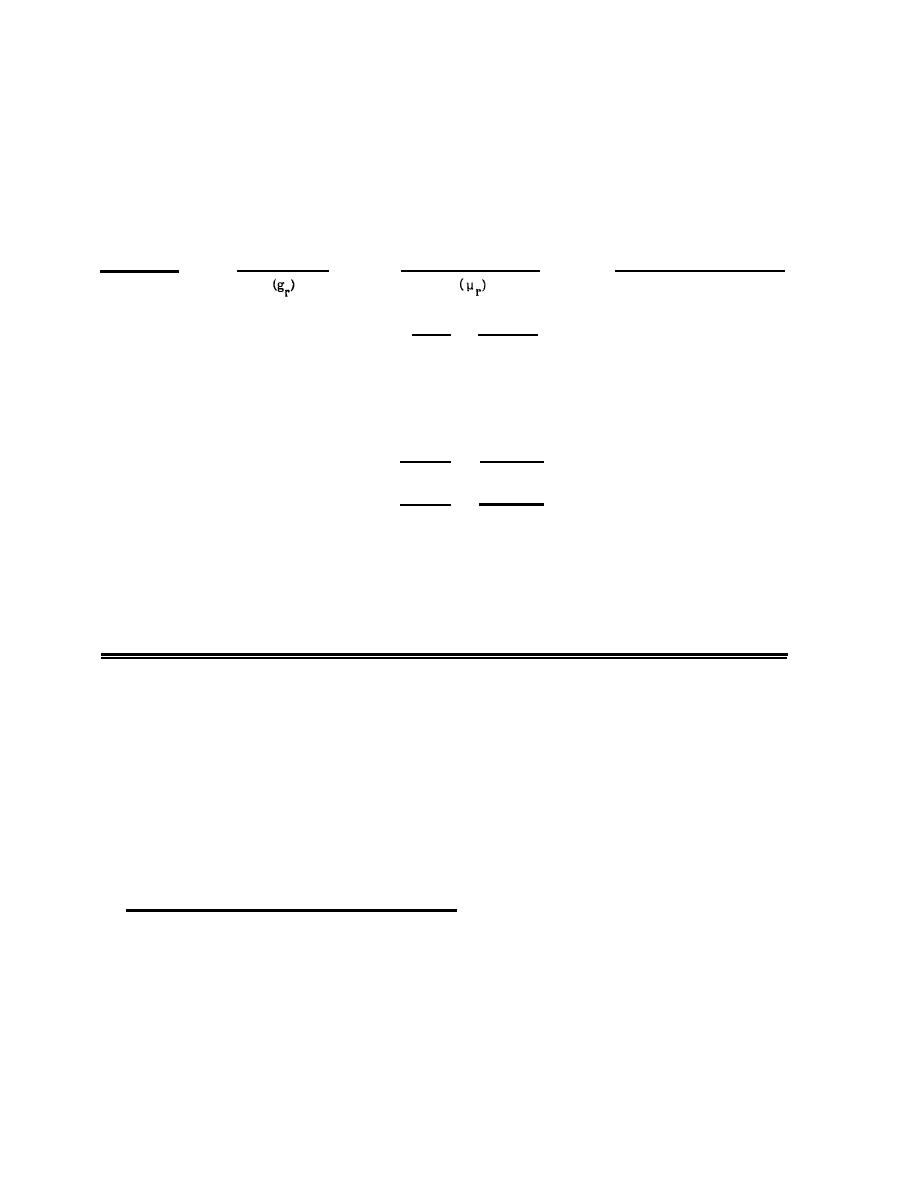

Custom Search
|
|

|
||
 MIL-HDBK-419A
Table 1-29 (Continued)
Relative Conductivity and Relative Permeability of Common Metals
Relative
Relative
Comments
Permeability
Metal
Initial
Maximum
10% Si, 5% Al, 85% Fe
120,000
.022 - .029
Sendust
30,000
(cast)
1
Silver
1.064
0.4%-0.5% C, bal. Fe
100
50
.078 - .133
Steel
13% Mn, 1% C, 86% Fe
.025
Steel, manganese
4% Si, 96% Fe (hot rolled)
500
7,000
Steel, silicon
.034
0.1% C, 18% Cr, 8% Ni,
.019
Steel, stainless
73.9% Fe
79% Ni, 5% MO, 16% Fe
.029
100,000
1,000,000
Supermalloy
Tin
.151
1
Titanium
.036
1
.315
1
Tungsten
Zinc
.287
.1
Cover all openings required for visual access with wire screen or conductive glass (see Volume I,
e.
Section 8.5.3.2). Insure that the screen or glass is carefully bonded to the enclosure around the perimeter of the
opening.
Doors should be metal with solid, uniform contact around the edges. Wire mesh gaskets or finger
f.
stock should be provided.
For large shielded enclosures where high traffic volume is expected, consider the use of waveguide-
g.
below-cutoff hallways.
1.9 COMMON-MODE NOISE AND INSTRUMENTATION. There are several steps which can be taken during
the design and construction stages of a facility to minimize subsequent common-mode noise problems in
instrumentation, equipment, and systems. The recommended steps should be recognized as being appropriate
for interference control in general and not limited strictly to common-mode noise.
1-164
|
 
|
|
 |
||